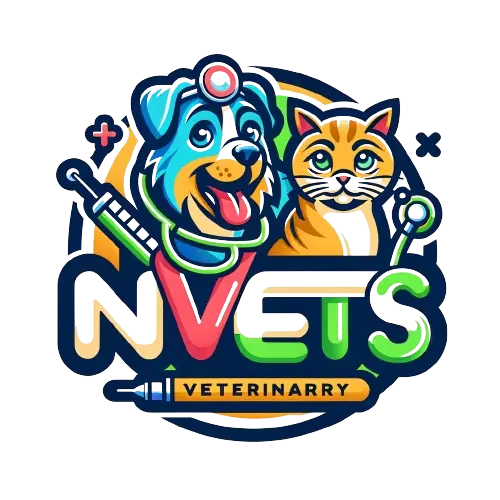Calling all pet owners! Are you searching for the perfect pet food to keep your furry friends happy, healthy and well-fed? You’re not alone! With so many options on the market, choosing the best pet food can be overwhelming. But fear not because we’ve got you covered with our guide to help you make informed decisions about what goes into those adorable little bellies. This blog post has everything from top brands to common ingredients and everything in between. So sit back, relax (with your furball by your side), and get ready to become a pet food expert!
Pet Food Ingredients
Attention all pet lovers and owners! Have you ever wondered what ingredients are in your furry friend’s food? We all want to ensure our beloved pets eat healthy and nutritious meals. Still, with so many different types of pet foods on the market, it can be overwhelming to decipher what is in them. That’s why we’ve compiled a comprehensive guide to pet food ingredients – from the good to avoidable ones – so you can make informed decisions about what goes into your pet’s bowl. Would you kindly consider joining us as we delve into the fascinating realm of pet food ingredients?
Meat
Regarding meat, there are a few things you should look for in pet food ingredients. First, the source of the meat should be indicated on the label. It should also say whether the meat is fresh, frozen, or dry.
Second, you’ll want to make sure that the pet food contains animal protein that is complete and balanced. This means it includes all of the essential amino acids your pet needs for good health.
Third, you’ll want to choose pet food ingredients rich in nutrients like omega-3 fatty acids and zinc. These nutrients are essential for a healthy coat and skin and for overall immunity.
Finally, you’ll want to avoid pet food ingredients with high hormones or antibiotics. These can harm your pet’s health and cause unwanted side effects.

Poultry
Poultry is a popular ingredient in pet food because it is a good source of protein and other nutrients. Chicken, turkey, and duck are the most common types of poultry used in pet food. Poultry can be cooked or raw, but it is vital to ensure it is cooked properly to avoid foodborne illness.
Grains
Many different types of grains can be used in pet food, but the most common are wheat, corn, and rice. Each of these grains has additional nutritional benefits for your pet.
Wheat is a good source of fibre and protein and is also low in fat. It can help to keep your pet’s digestive system healthy and can also be used as a gentle laxative.
Corn is a good carbohydrate source and high in vitamins A and C. It can help give your pet energy and aid in their digestion.
Rice is a good source of complex carbohydrates and is high in B vitamins. It can help regulate your pet’s blood sugar levels and aid in their digestion.
Fish
There is a variety of fish that can be used in pet food. The most common fish used in pet food are salmon, tuna, and whitefish. Salmon is an excellent source of omega-3 fatty acids, which can help keep your pet’s coat healthy and shiny. Tuna is a good source of protein and omega-3 fatty acids but is also high in mercury, so it should be fed to pets in moderation. Whitefish is an excellent all-purpose fish for pet food because it is lower in mercury than tuna and high in protein.
Food Additives
A variety of food additives can be found in pet food. These include preservatives, flavours, colours, and sweeteners. While some additives are necessary to keep the food fresh and safe, others are added for convenience or aesthetics.
Preservatives are added to pet food to prevent spoilage and extend shelf life. Typical preservatives include vitamins C and E and antioxidants like BHA and BHT. Flavourings are added to improve the taste of the food and make it more appealing to pets. Common flavourings include meat meals, broth, and gravy. Colours are added to make the food look more attractive to humans, but they serve no nutritional purpose for pets. Sweeteners like sugar and corn syrup may be added to pet food to make it more palatable, but they can also lead to obesity and other health problems if consumed in excess.
Fruits
Fruits are an excellent source of vitamins, minerals, and antioxidants. They also contain fibre, which is important for gut health. When choosing fruits for your pet, look for those that are fresh, organic, and free of pesticides. Some good choices include apples, bananas, blueberries, cantaloupe, grapes, oranges, strawberries, and watermelon. Avoid giving your pet fruit with pits or seeds, as these can be choking hazards.
Oils
Many different types of oils are used in pet food, each with its benefits. The most common oils used in pet food are fish oil, chicken fat, and vegetable oil.
Fish oil is a great source of omega-3 fatty acids, which can help improve your pet’s coat and skin health. It can also help reduce inflammation and joint pain.
Chicken fat is a good energy source and helps keep your pet’s coat shiny and healthy. Vegetable oil is a healthy alternative to other oils and can help improve your pet’s digestion.
What to Look for in Pet Food
When it comes to choosing the best pet food, there are a few things you should keep in mind:
- Consider your pet’s age, activity level, and health concerns.
- Look at the ingredients list and ensure the food contains quality ingredients appropriate for your pet.
- Check the manufacturer’s website for recalls and safety information.
By following these simple tips, you can be sure you’re choosing the best food for your beloved pet.
Pet Food Feeding Guidelines
When it comes to feeding your pet, remember a few things:
- You’ll want to choose a food tailored to your pet’s needs. For example, if you have a small dog, you’ll want to find food designed for small breeds.
- You’ll want to make sure that you’re following the recommended feeding guidelines for your pet’s age, weight, and activity level.
- You’ll want to know of any potential allergies or sensitivities your pet may have.
When choosing the best pet food, there are many options out there. But by following these simple guidelines, you can be sure you’re giving your pet the nutrition they need to thrive.
When it comes to your pet’s food, you want to ensure you get the best possible product. With so many different brands and types of pet food on the market, it can take time to figure out where to start. This guide will help you sort through the options and find the best food for your pet. The most important thing to remember when choosing a pet food is to read the labels carefully. Pay attention to the ingredients list and ensure the first ingredient is a meat protein. Avoid foods that contain fillers or by-products, as these can be difficult for your pet to digest. You should also look for a portion of pet food formulated for your specific type of animal. For example, some cat foods are designed for indoor cats, while others are better suited for outdoor cats. Choosing the right food for your pet will help them stay healthy and happy.

